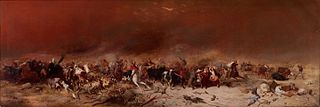 W
WThe History of Australia (1851–1900) refers to the history of the indigenous and colonial peoples of the Australian continent during the 50-year period which preceded the foundation of the Commonwealth of Australia in 1901.
 W
WAfter the 1890 Australian maritime dispute and the 1891 Australian shearers' strike both of which were long, drawn out affairs in which trade unions were defeated, running out of funds, actions by increasingly militant and desperate unions led up to perhaps the most violent shearers' strike, in 1894.
 W
WThe Australasian Anti-Transportation League was a body established to oppose penal transportation to Australia. Beginning in Van Diemen's Land (Tasmania) in the late 1840s, it had branches in Adelaide, Melbourne, Sydney, and Canterbury. The Colonial Office abandoned transportation to eastern Australia in 1852.
 W
WDespite being across the world from the conflict, the Australian colonies were affected by the American Civil War both economically and by immigration. The Australian cotton crop became more important to England, which had lost its American sources, and it served as a supply base for Confederate blockade runners. Immigrants from Europe seeking a better life also found Australia preferable to war-torn North America.
 W
WThe Australian frontier wars is a term applied by some historians to violent conflicts between Indigenous Australians and white settlers during the British colonisation of Australia. The first fighting took place several months after the landing of the First Fleet in January 1788 and the last clashes occurred in the early 20th century, as late as 1934. A minimum of 40,000 Indigenous Australians and between 2,000 and 2,500 settlers died in the wars. However, recent scholarship on the frontier wars in what is now the state of Queensland indicates that Indigenous fatalities may have been significantly higher. Indeed, while battles and massacres occurred in a number of locations across Australia, they were particularly bloody in Queensland, owing to its comparatively larger pre-contact Indigenous population.
 W
WThe Australian Natives' Association (ANA) was a mutual society founded in Melbourne, Australia in April 1871 as the Victorian Natives' Association. At the time its membership was restricted to white men born in Australia. The organisation had 60,000 members at its peak, and influential lobbying power, campaigning against non-white immigration and promoting federation and the White Australia policy. The organisation's last remaining chapter closed in 2007.
 W
WThe Australian Overland Telegraph Line was a 3,200 km (2,000 mi) telegraph line that connected Darwin with Port Augusta in South Australia. Completed in 1872, the Overland Telegraph Line allowed fast communication between Australia and the rest of the world. An additional section was added in 1877 with the completion of the Western Australian section of the line. It was one of the great engineering feats of 19th-century Australia and probably the most significant milestone in the history of telegraphy in Australia.
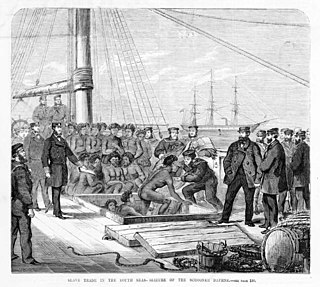 W
WBlackbirding involves the coercion of people through deception or kidnapping to work as slaves or poorly paid labourers in countries distant to their native land. The term has been most commonly applied to the large-scale taking of people indigenous to the numerous islands in the Pacific Ocean during the 19th and 20th centuries. These blackbirded people were called Kanakas or South Sea Islanders. They were taken from places such as the Solomon Islands, Vanuatu, Niue, Easter Island, Gilbert Islands, Tuvalu and the islands of the Bismarck Archipelago amongst others.
 W
WThe "Bulletin Debate" was a well-publicised dispute in The Bulletin magazine between two of Australia's best known writers and poets, Henry Lawson and Banjo Paterson. The debate took place via a series of poems about the merits of living in the Australian "bush", published from 1892 to 1893.
 W
WThe Burke and Wills expedition was organised by the Royal Society of Victoria in Australia in 1860–61. It consisted of 19 men led by Robert O'Hara Burke and William John Wills, with the objective of crossing Australia from Melbourne in the south, to the Gulf of Carpentaria in the north, a distance of around 3,250 kilometres. At that time most of the inland of Australia had not been explored by non-Indigenous people and was largely unknown to the European settlers.
 W
WBushrangers were originally escaped convicts in the early years of the British settlement of Australia who used the bush as a refuge to hide from the authorities. By the 1820s, the term had evolved to refer to those who took up "robbery under arms" as a way of life, using the bush as their base.
 W
WThe Chevert expedition was led and financed by William Macleay. The purpose of the expedition was to collect natural history samples from New Guinea and the Torres Strait. The Chevert sailed from Sydney on May 18, 1875 and returned in September that year. Scientific specimens collected included approximately 1,000 birds, 800 fish, reptiles, insects, molluscs, plants and ethnographic objects.
 W
WUntil Australia became a Federation in 1901, each of the six colonies were responsible for their own defence. From 1788 until 1870 this was done with British regular forces. In all, 24 British infantry regiments served in the Australian colonies. Each of the Australian colonies gained responsible government between 1855 and 1890, and while the Colonial Office in London retained control of some affairs, and the colonies were still firmly within the British Empire, the Governors of the Australian colonies were required to raise their own colonial militia. To do this, the colonial Governors had the authority from the British crown to raise military and naval forces. Initially these were militias in support of British regulars, but British military support for the colonies ended in 1870, and the colonies assumed their own defence. The separate colonies maintained control over their respective militia forces and navies until 1 March 1901, when the colonial forces were all amalgamated into the Commonwealth Forces following the creation of the Commonwealth of Australia. Colonial forces, including home raised units, saw action in many of the conflicts of the British Empire during the 19th century. Members from British regiments stationed in Australia saw action in India, Afghanistan, the New Zealand Wars, the Sudan conflict, and the Boer War in South Africa.
 W
WThe Cullin-la-ringo massacre, known historically as the Wills tragedy, occurred north of modern-day Springsure in Central Queensland on 17 October 1861. It remains the largest massacre of white settlers by Aboriginals in Australian history, and a pivotal moment in the frontier wars in Queensland.
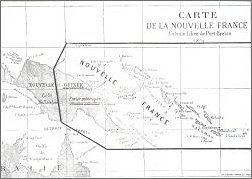 W
WThe Third de Rays Expedition, or simply the de Rays Expedition, was the third New Guinea expedition of Marquis de Rays, a French nobleman who attempted to start a colony in the South Pacific. The expedition attempted to establish a colony in a place the marquis called La Nouvelle France, or New France, which was the island now referred to as New Ireland in the Bismarck Archipelago of present-day Papua New Guinea. Three hundred and forty Italian colonists aboard the ship India set sail from Barcelona in 1880 for this new land, seeking relief from the poor conditions in Italy at that time. One hundred and twenty-three colonists died before being rescued by Australian authorities. The marquis is widely believed to have deliberately misled the colonists, distributing literature claiming a bustling settlement existed at Port Breton, near present-day Kavieng, which had numerous public buildings, wide roads, and rich, arable land.
 W
WThe Eureka Rebellion occurred in 1854, involving gold miners in Ballarat, Victoria, Australia, who revolted against the colonial authority of the United Kingdom. It culminated in the Battle of the Eureka Stockade, which was fought between the rebels and the colonial forces of Australia on 3 December 1854 at Eureka Lead and named after a stockade structure built by miners in the lead-up to the conflict. The rebellion resulted in at least 27 deaths and many injuries, the majority of casualties being rebels.
 W
WThe Federation of Australia was the process by which the six separate British self-governing colonies of Queensland, New South Wales, Victoria, Tasmania, South Australia, and Western Australia agreed to unite and form the Commonwealth of Australia, establishing a system of federalism in Australia. The colonies of Fiji and New Zealand were originally part of this process, but they decided not to join the federation. Following federation, the six colonies that united to form the Commonwealth of Australia as states kept the systems of government that they had developed as separate colonies, but they also agreed to have a federal government that was responsible for matters concerning the whole nation. When the Constitution of Australia came into force, on 1 January 1901, the colonies collectively became states of the Commonwealth of Australia.
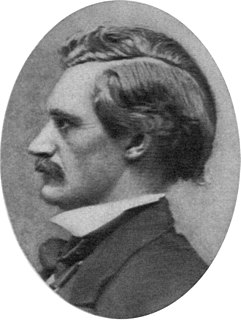 W
WThe Forty-Eighters were Europeans who participated in or supported the revolutions of 1848 that swept Europe. In the German states, the Forty-Eighters favored unification of the German people, a more democratic government, and guarantees of human rights. Disappointed at the failure of the revolution to bring about the reform of the system of government in Germany or the Austrian Empire and sometimes on the government's wanted list because of their involvement in the revolution, they gave up their old lives to try again abroad. Many emigrated to the United States, the United Kingdom, and Australia after the revolutions failed. These emigrants included Germans, Czechs, Hungarians, and others. Many were respected and politically active, wealthy, and well-educated. A large number went on to be very successful in their new countries.
 W
WGold Escorts were common across Australian goldfields, transporting mined and processed material from mines to banks and mints across the country.
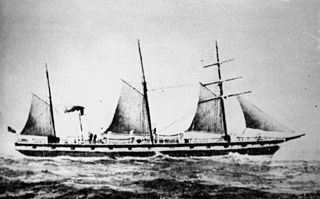 W
WThe SS Gothenburg was a steamship that operated along the British and then later the Australian and New Zealand coastlines. In February 1875, Gothenburg left Darwin, Australia and while en route to Adelaide it encountered a cyclone-strength storm off the north Queensland coast. The ship was wrecked on the Great Barrier Reef north-west of Holbourne Island on 24 February 1875. Survivors in one of the lifeboats were rescued two days later by Leichhardt, while the occupants of two other lifeboats that managed to reach Holbourne Island were rescued several days later. Twenty-two men survived, while between 98 and 112 others died, including a number of high-profile civil servants and dignitaries.
 W
WThe Hobart coastal defences are a network of now defunct coastal batteries, some of which are inter-linked with tunnels, that were designed and built by British colonial authorities in the nineteenth century to protect the city of Hobart, Tasmania, from attack by enemy warships. During the nineteenth century, the port of Hobart Town was a vital re-supply stop for international shipping and trade, and therefore a major freight hub for the British Empire. As such, it was considered vital that the colony be protected. In all, between 1804 and 1942 there were 12 permanent defensive positions constructed in the Hobart region.
 W
WThomas Icely was an early colonial New South Wales landholder and stockbreeder. As a nominee Legislative Councillor from 1843, to 1853, and from 1855, until the establishment of responsible government in 1856, he was a consistent supporter of the Governor. He served a second term as a life appointee to the Legislative Council from 1864.
 W
WThe Infants' Home Child and Family Services was established in Sydney, Australia in 1874 as a refuge for unwed mothers and their babies and evolving over time to a current provider of early childhood education and health services.
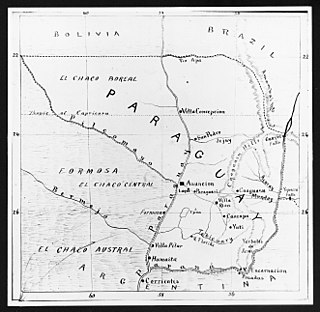 W
WNew Australia was a utopian socialist settlement in Paraguay founded by the New Australian Movement. The colony was officially founded on 28 September 1893 as Colonia Nueva Australia and comprised 238 people.
 W
WThe Oriental Claims are a former gold mining operation, or claim, located 2 km south of Omeo, Victoria, Australia. The Oriental Claims are named in reference to The Oriental Company which mined in the area from 1876 to 1904, and also in memory of the many Chinese miners ('Orientals') that worked the area for over 50 years.
 W
WWilliam Beauclerc Otway was a mid-nineteenth-century dragoon, overland emigrant, merchant, mineralogist, gold-miner and quartz-crusher. He is credited with being the first person to crush quartz for gold at Ballarat and for an early attempt to mine and process silver ore at St Arnaud.
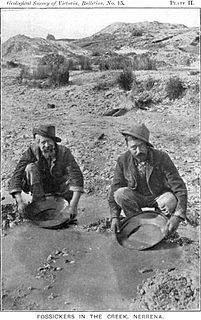 W
WThe Victorian gold rush was a period in the history of Victoria, Australia approximately between 1851 and the late 1860s. It led to a period of extreme prosperity for the Australian colony, and an influx of population growth and financial capital for Melbourne, which was dubbed "Marvellous Melbourne" as a result of the procurement of wealth.
 W
WThe Welcome Nugget is a large gold nugget, weighing 2,217 troy ounces 16 pennyweight. (68.98 kg), that was discovered by a group of twenty-two Cornish miners at the Red Hill Mining Company site at Bakery Hill in Ballarat, Victoria, Australia, on 9 June 1858. It was located in the roof of a tunnel 55 metres (180 feet) underground. Roughly shaped like a horse's head, it measured around 49 cm (18 in) long by 15 cm (6 in) wide and 15 cm (6 in) high, and had a roughly indented surface. It was assayed by William Birkmyre of the Port Phillip Gold Company and given its name by finder Richard Jeffery. Eclipsed by the discovery of the larger Welcome Stranger eleven years later in 1869, it remains the second largest gold nugget ever found.
 W
WThe Welcome Stranger is the biggest alluvial gold nugget found, which had a calculated refined weight of 97.14 kilograms (3,123 ozt). It measured 61 by 31 cm and was discovered by prospectors John Deason and Richard Oates on 5 February 1869 at Moliagul, Victoria, Australia, about 14.6 kilometres north-west of Dunolly.
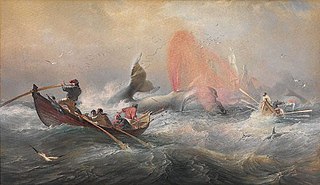 W
WWhaling in Australian waters began in 1791 when five of the 11 ships in the Third Fleet after landing their passengers and freight at Sydney Cove then left Port Jackson to engage in whaling and seal hunting off the coast of Australia and New Zealand. The two main species hunted by such vessels in the early years were right and sperm whales. Later, humpback, bowhead and other whale species would be taken.
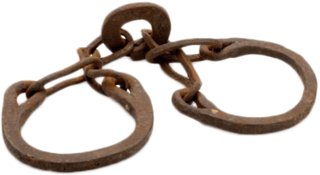 W
WWife selling is the practice of a husband selling his wife and may include the sale of a female by a party outside a marriage. Wife selling has had numerous purposes throughout the practice's history; and the term "wife sale" is not defined in all sources relating to the topic.